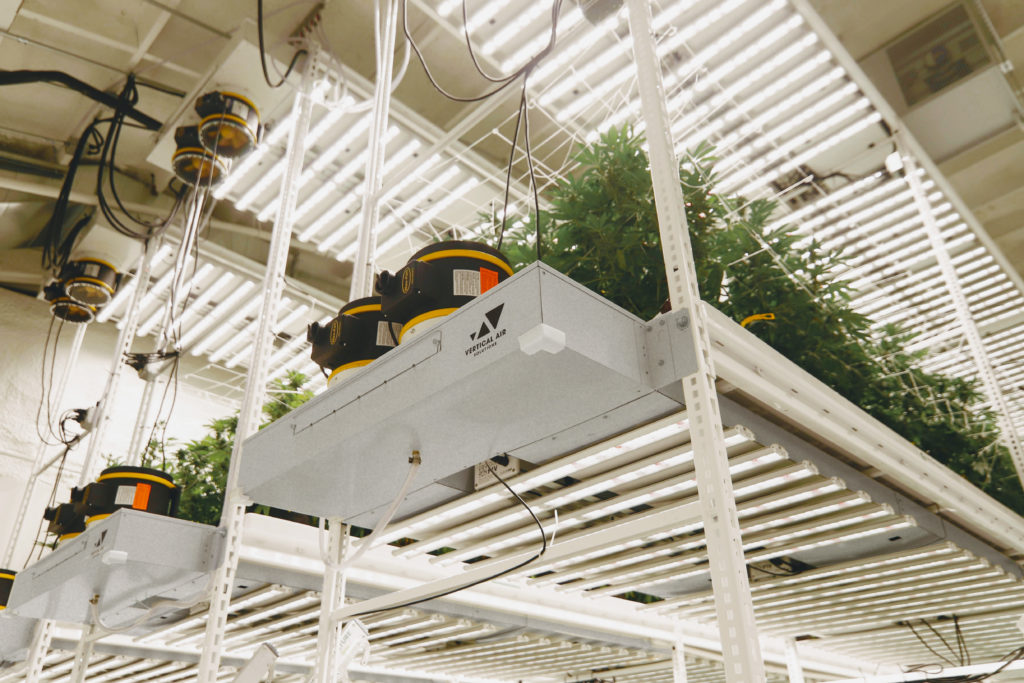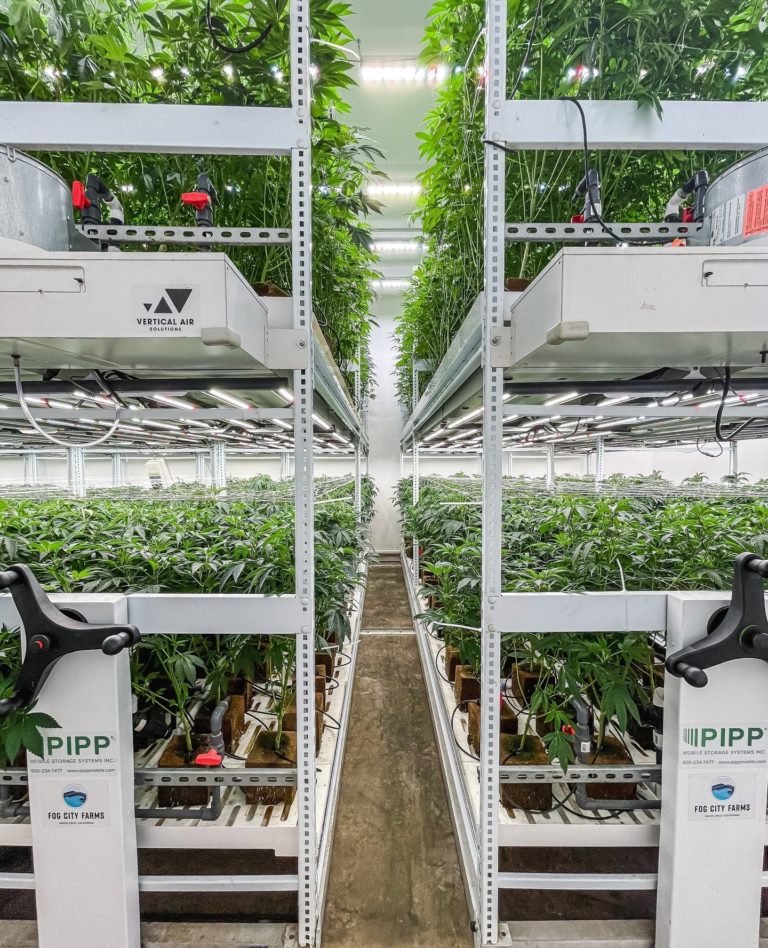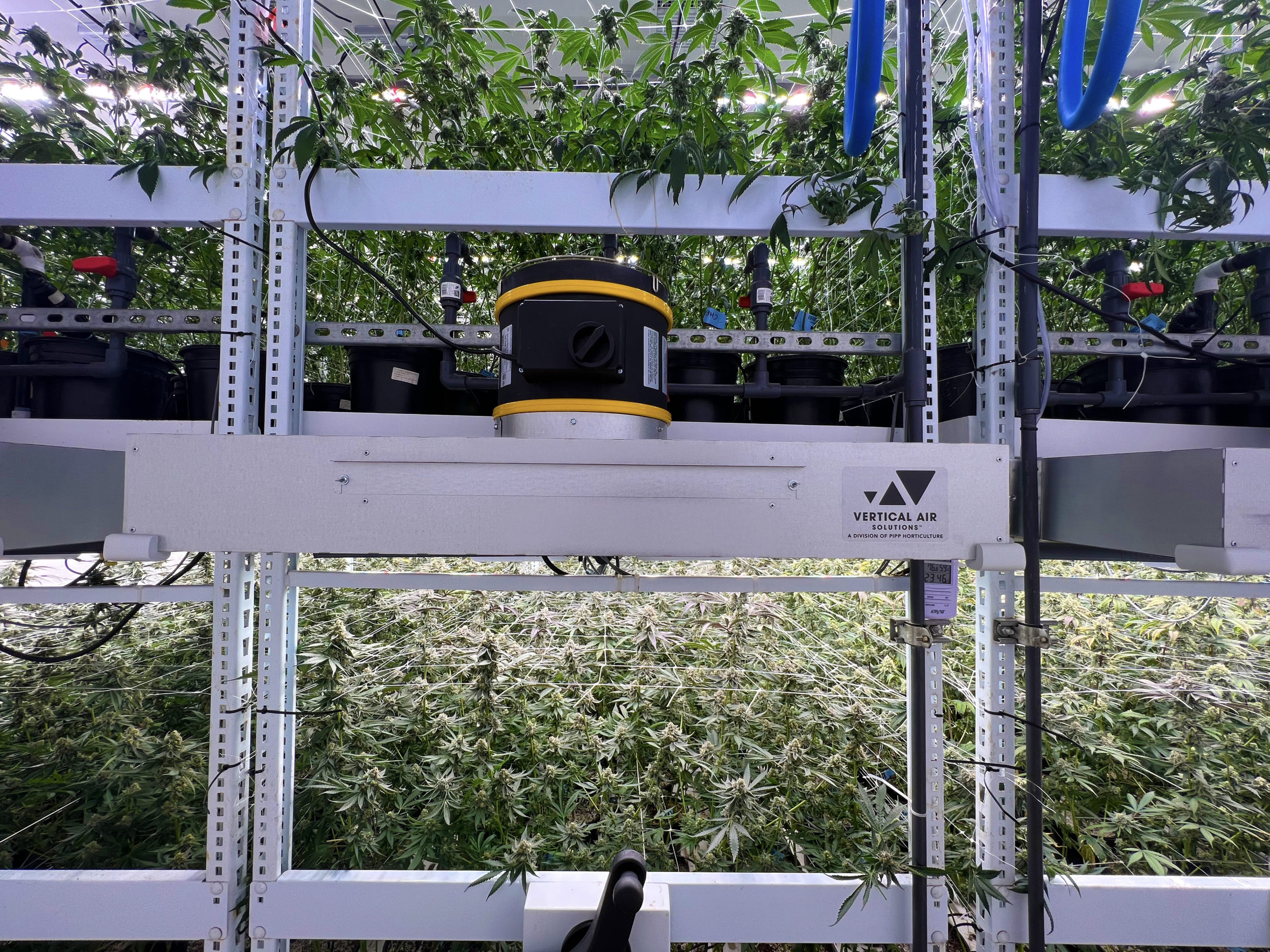In today’s legal cannabis market, growers need to be meticulous about every detail in their facility in order to protect their bottom line. Preventing pest and disease outbreaks can save companies millions of dollars and ensure positive consumer perception. Those consumers expect consistency from the brands they support, and competition is too fierce to not produce a quality and consistent product.
One of the most effective ways to ensure consistency and quality from batch to batch is to have the proper airflow technologies and systems in place. Although it may seem like more of an afterthought when it comes to setting up your facility, airflow in a growing environment is essential to cultivating happy, disease-free, and potent plants. Without it, you risk producing a smaller, low-quality crop while exposing your plants to unwanted pests and pathogens. Between competition, declining market prices, and the constraints of 280E, a smaller, low-quality product—or even worse, a catastrophic crop failure—isn’t an option if you want to survive in this industry.
The Importance of Airflow in Grow Rooms
Proper airflow technology in a grow room gives growers more control over their environment because it helps to manage and homogenize temperature, humidity, and CO2/oxygen levels. Maintaining ideal temperature and humidity for each growth phase will significantly increase crop yield, active compounds, and plant vigor.
1. Temperature Control
Whether growing in a greenhouse with sunlight or indoors with LEDs, you can expect your canopy to get hot. Airflow moves the air directly underneath the grow lights, keeping it from getting too hot or stagnant. It also provides air movement throughout the plant canopy, which can harbor hot air, especially if the plants are close together or not maintained properly. Though some cannabis plants do enjoy warmer temperatures during certain growth phases, maintaining consistent day/night temperatures within an optimal range provides an ideal growing environment that promotes maximum yield and chemotype expression. With a proper airflow technology setup, you can help to manage and maintain specific temperatures tailored to specific cultivars.
2. Humidity Control
Greenhouses and controlled environment agriculture (CEA) grow rooms are usually humid from irrigation, fertigation, and transpiration activities. Though many plants enjoy humidity,
maintaining specific humidity relative to temperature provides an optimal environment for plants to thrive. Vapor pressure deficit (VPD) is a key parameter used by growers to determine optimal humidity and temperature settings through different growth phases.
Also, mold, mildew, and fungus flourish under certain conditions, so maintaining proper humidity levels is crucial to avoiding pathogens and producing healthy plants. An appropriate airflow solution helps eliminate microclimates and circulate moist air that would normally hang over plants. If that air doesn’t move, it can cause condensation and adverse conditions that can weaken your plants or make the final product unsellable.
3. CO2 and Oxygen Control
Like humans, plants breathe, and they perform sub-optimally if they run out of or don’t have enough of CO2 and oxygen. A deficit like that can occur without proper planning, design, and installation of the right airflow technology.
Plants need CO2 to perform photosynthesis, so it’s essential your airflow solution replaces and replenishes the air often while providing adequate CO2 to the stomata in order to ensure maximum plant productivity. Studies have shown that CO2 enrichment can significantly increase the photosynthetic rate (or growth rate) of cannabis, resulting in faster growth and increased yields. Proper airflow technology will circulate and replace the air in your grow room sufficiently and at intervals in line with other growing parameters.
With well-designed airflow technology and integrated grow controls, these critical factors are easy to control. Using a tech-backed system, as opposed to just a few fans and vents, ensures you can monitor and control the temperature, humidity, CO2, and oxygen levels of your greenhouse or CEA grow room onsite or remotely. With that level of control, you can improve the quality and consistency of your product, while decreasing instances of crop loss from pathogens, overexposure to heat and humidity, or lack of air exchange.

Types of Airflow Technology
There are a few different types of airflow technology.
Some systems use little to no mechanical equipment to supply and remove air. Instead, you have openings in your grow room or greenhouse that let the natural air in and out without the help of fans or other systems. This type of system is known as passive airflow. It might be a plausible option for small, personal grows, but for commercial operations, you will want a more sophisticated and controlled airflow system.
Using a system with intake fans is known as active airflow. An active system ensures much more air circulation because you’re not relying on an outside breeze to blow through. These systems may include vertical or horizontal fans and ducts to circulate air.
Vertical airflow technology, like VAS’s Air Circulation System, provides more consistent circulation and coverage than horizontal fans because it creates more air movement at the canopy level and beyond. This not only helps to strengthen your plants (plants need agitation to develop a more robust root system and stalk), but it also helps to eliminate the formation of microclimates around your plants, encouraging respiration and transpiration. We recommend integrating this airflow system with mobile vertical grow racks for an optimal multi-level grow environment. A vertical grow setup makes for efficient use of cubic space while increasing output, profitability, and plant health.
Factors To Consider When Choosing Airflow Technology
Choosing the right airflow solution for your greenhouse or CEA vertical grow room depends on HVAC design, room size, layout, plant count spacing, optimal environmental set points, and budgetary factors. If you’re planning to scale, take that into consideration when designing the foundation and infrastructure for current and future phases.
When evaluating airflow technology, consider the factors below as well.
1. Sizing and Placement of Fans
When choosing an airflow solution, keep in mind that you want as much of your facility, and specifically of your grow area, working toward your bottom line as possible. That means you need to consider the size and placement of your fans to avoid or minimize taking up valuable cultivation space.
With VAS’s Air Circulation System, the fans easily attach to the inside of your grow racks, so you don’t lose any money-making space to stagnant aisles.
2. Automation and Integration
Another important factor is the amount of automation behind the airflow solution you’re considering and how it can integrate with other systems. You may want something that automatically turns your system on or off and can monitor variables and keep you informed on necessary changes.
When evaluating airflow systems, consider integration with your intended environmental control system. An environmental control system throughout the grow will monitor environmental variables and make decisions for you, automatically controlling systems including airflow to circulate and exchange air whenever necessary.
3. Cost and Cost Savings
Finally, evaluate the cost, including CAPEX and OPEX, of the airflow technology you’re considering and the cost savings it could provide.
With the proper airflow technology setup, you can expect a more consistent environment resulting in more consistent and quality finished goods that build customer loyalty and brand reputation, two things that can increase sales and enterprise value. Additionally, with proper ventilation, your crop will face fewer issues like disease, pathogens, overheating, and too much moisture. Mitigating these issues means fewer dollars lost on damaged crops and IPM and better performing plants that can produce greater yields.

Proper ventilation and airflow in your greenhouse or CEA indoor grow room will positively impact your operation, starting with your plants and extending all the way to your bottom line. When designing your facility, thought and consideration of airflow should receive equal attention as other components like lighting and irrigation.
To produce top-shelf cannabis, you need control over every variable in your grow. Proper airflow technology assists in regulating and homogenizing your grow room’s temperature, humidity levels, and CO2 and oxygen levels. Before choosing the system that’s right for you and your business, consider the sizing and placement of your fans, the automation and tech backing them, and how much money they’ll cost you versus how much money they’ll save or earn you.
When you’re ready to equip your greenhouse or indoor grow facility with the top airflow technology on the market today, reach out to us at VAS. We’ve been working with cannabis growers for decades and can help you install the best airflow solution for your business needs.


